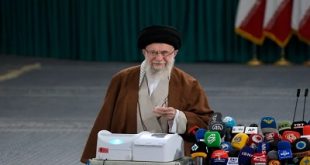The effort to repair Air India’s reputation is “well under way,” according to CEO Campbell Wilson.

Once upon a time, Singapore’s founding father Lee Kuan Yew utilized Air India’s stellar service record as a model for establishing the nation’s own flag carrier in the early 1970s.
India’s national airline earned billions of dollars in losses and battled a reputation for being late and providing subpar service in recent decades, making it a cautionary story of decline.
Continue reading [list 1 of 4 items]
1. 90 people are killed and thousands are displaced by Brazil’s floods, prompting “desperate” rescue efforts.
2. Sikh leaders applaud the arrests in the Canadian activist killing, but there are still unanswered issues list
3. Owner of TikTok ByteDance launches a lawsuit against US law requiring the sale list for the app.
4. Key events of Day 804 of the Russia-Ukraine War
After decades of state ownership, the CEO Natarajan Chandrasekaran set forth a clear goal when the Tata Group acquired the business in October 2021, giving the wealthy Tata family back control: “To build a world-class airline.”
Air India CEO Campbell Wilson, hired in 2022 from Singapore’s low-cost airline Scoot, is tasked with spearheading this objective. JRD Tata, a French-Indian aviator entrepreneur, created the airline in 1932.
“Over the years, standards have slipped considerably,” Wilson said in an exclusive interview with Al Jazeera.
However, Wilson is convinced that, in accordance with a five-year turnaround plan announced last year, “the journey to restoring Air India to its former glory is well under way.”

on recent years, the Tata Group has invested tens of billions of dollars on modernizing the cabin, buying 470 new aircraft, revamping the company’s brand, and improving customer service.
Air India intends to take advantage of the enormous development potential of the Indian aviation sector, which is currently the third largest in the world with over 145 million domestic passengers annually, after the “capital-intensive” five-year plan is finished.
The Tata Group’s aging fleet, whose maintenance has been disregarded for decades, has been its top concern.
Air India added 36 leased aircraft—11 Boeing 777s and 25 Airbus A320s—shortly after the ownership shift, enabling the airline to add six new foreign routes and raise frequency on an additional 24.
The largest investment made by Air India was revealed when it revealed plans to spend $70 billion purchasing 470 new Airbus and Boeing aircraft, including 140 A320neos, 70 A321neos, and 190 737 MAX models.
Wilson stated that Air India will be able to “operate the most advanced and fuel-efficient fleet within five years” as a result of the acquisitions.
Additionally, the airline intends to spend $400 million retrofitting the interiors of its current aircraft.
Wilson stated that 40 historic wide-body Boeing 777s and 787s will undergo a “complete makeover with all new interiors” following the retrofit’s initial focus on the airline’s narrow-body A320neo and A321neo aircraft.
New food selections and premium economy seats on specific long-haul flights are two more measures to enhance onboard service.
The Tata Group’s investments, according to Atmosphere Research Group president Henry H. Harteveldt, may help lay the groundwork for Air India’s success, but if the airline is not able to maintain consistency and punctuality, the modifications won’t have much of an impact.
Harteveldt told Al Jazeera that Air India should prioritize being known as “the on-time machine.”
“Customers won’t have the confidence to book with that airline if a service isn’t considered reliable,” he stated.

strained relationships
One of the largest challenges facing the Tata Group could be repairing the strained connection between Air India and its customers.
In addition to persistent problems with dependability and timeliness, the airline’s reputation has been damaged by high-profile incidents involving its customer service, like the February incident in which an 80-year-old passenger passed away after having to walk 1.5 km (2.4 miles) from the aircraft to the immigration counter because there weren’t enough wheelchairs.
The efforts of Air India to renew its fleet will not be successful unless the airline can instill a “new customer service mindset among its customer-facing staff,” according to John Gradek, an aviation management expert at McGill University in Montreal, Canada. This is a difficult task that has proven difficult “for many airlines looking to grow their international brand.”
The initial part of Air India’s turnaround plan has been completed, more than two years after the airline was acquired by the Tata Group.
Among its accomplishments to date are the $200 million investment in new IT to increase dependability and the hiring of over 3,800 new staff members in a variety of roles to support expansion.
Since Air India has been “tech-starved for a long time because of the Indian government’s inability or unwillingness to invest in the airline adequately,” Harteveldt noted that the IT investment was especially welcome.
With the scheduling of new international routes using the recently delivered Airbus A350-900 between Delhi and Dubai, the Tata Group’s success has continued beyond 2024.



